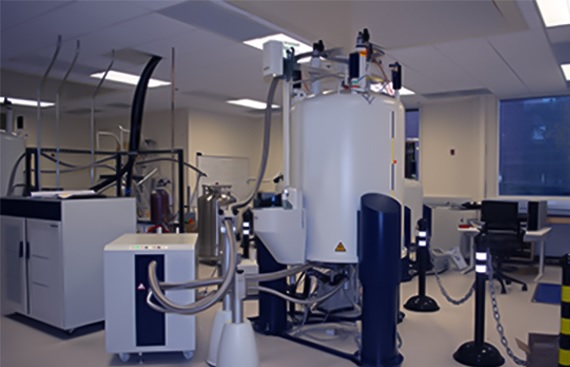Where Spectroscopy Weaves Manufacturing Wonders

Spectroscopy, deep-rooted in the quantum theory of atoms, has converted both chemistry and astronomy. By observing the unique spectra manufactured or absorbed by atoms and molecules, scientists can describe their chemical conformation, temperature, and pressure. In astronomy, spectrographs reveal the secrets of celestial bodies, opening the structure of stars, nebulae, and galaxies. By observing the redshift of distant galaxies, astronomers gauge cosmic distances and unravel the mysteries of the increasing universe. On a smaller scale, spectroscopy detects minute shifts in starlight caused by numerous phenomena, such as binary star orbits or exoplanet motions, showcasing the versatility and power of this scientific tool.
The Role of Spectroscopy
Recent developments in spectroscopic instrumentation have developed adhesive quality control by introducing miniaturized handheld devices and portable spectrometers for on-site analysis, significantly reducing time-to-result and improving operational efficiency. Integration with data analytics and chemometric software allows predictive modeling and trend analysis, empowering manufacturers to proactively manage quality parameters and optimize construction processes. Spectroscopy plays an essential role in assessing formulation composition, reaction kinetics, and contaminant detection, confirming consistency, reliability, and performance of adhesive products across varied applications. As technology changes, spectroscopy continues to drive innovations in adhesive manufacturing and quality assurance, serving as a keystone for current improvements in the field.
Nano-Inspired Spectrometric Biosensors
Spectrometric biosensors, leveraging changes in photophysical properties, are extremely required due to the extensive research and widespread application of spectrometry. With the changes in nanoscience and nanotechnology, several nano-inspired spectrometric biosensors have been established. These include colorimetric, fluorescent, chemiluminescence, electrochemiluminescence, surface plasmon resonance, surface-enhanced Raman scattering, and dynamic light scattering sensors. These biosensors not only take over the advantages of spectrometric analysis but also demonstrate unique benefits stemming from nanomaterials. This stage provides an in-depth consideration of diverse spectrometric biosensing systems rising in recent years.
Spectroscopy's Role in Planetary Studies
In the past twenty years, scientists have prepared big strides in using spectroscopy to study planets in our solar system, as well as Earth. Spectroscopy helps us detect, identify, and map resources from far away by exploring the light they reflect or emit. Spacecraft with special tools called spectrometers have been sent too many places, like Mercury, Venus, Mars, and even asteroids. They help us study about the composition of these places without requiring to land on them. We also use similar tools on airplanes to study Earth from above. This chapter focuses on using spectroscopy to study reflected sunlight and heat radiation, leaving out other types like gamma rays or radio waves, and mainly looking at missions that fly by or orbit planets or fly at high altitudes above 15 kilometers. We're not talking about landers that actually touch down on other planets or moons.
Spectroscopy's Versatile Impact across Industries
Spectroscopy shows an important role through diverse industries, verifying drug purity in pharmaceuticals and confirming regulatory compliance in the food and beverage sector. Its real-time monitoring capabilities drive improved efficiency and productivity in manufacturing procedures, from semiconductor fabrication to metallurgy. In medical laboratories, spectroscopy serves as a vital analytical tool, deciphering the composition and properties of biological tissue samples such as blood, bone, urine, and soft tissues. By using electromagnetic radiation, spectrometers excite sample atoms, allowing the categorization of atomic structures and rapid identification of molecular compositions. This versatile technology prolongs beyond medicine, finding application in numerous fields requiring molecular analysis, emphasizing its essential role in scientific investigation and diagnosis.
Gas chromatography/mass spectroscopy (GC/MS) positions as a gold standard for substance identification, presenting unparalleled specificity in confidently identifying specific substances. Liquid chromatography/mass spectroscopy (LC/MS) is widely adopted in pharmaceutical drug development due to its speed, sensitivity, and selectivity. It aids in protein identification, metabolite detection, molecular weight determination, structural verification, and impurity detection.
Rahul Gupta, CEO of Sigma Test & Research Centre, says, “Advanced instruments like mass spectrometers, IR spectroscopy and chromatography and technologies are utilized by the chemists to trace level of detection and identification of unknown residues depending upon the sample and application”.
Spectrophotometers for Food Color Measurement
Spectrophotometers show a significant role in the food industry by exactly measuring the color of products, ensuring quality and consistency. These tools are indispensable for quantifying the transparency and opacity of food items, providing dynamic data for quality control processes. Additionally, spectrophotometers are instrumental in measuring the transparency levels of beverages with variable degrees of clarity, creating them necessary tools for food color measurement in industries. Testronix offers portable spectrophotometers famous for their efficiency and accuracy, catering to various industries' needs. These instruments are user-friendly, allowing for easy operation, while their high precision ensures reliable testing results. With Testronix's spectrophotometers, industries can maintain stringent quality standards, improve product consistency, and meet consumer expectations for visually appealing food products. Whether testing the color of food items or measuring the transparency of beverages, Testronix's spectrophotometers serve as indispensable solutions for precise and reliable food color measurement in the food industry and beyond.
Spectro Sensations
Recently, Avantes has presented revolutionary inventions in spectroscopy technology, further solidifying its place as a leader in the field. Among these innovations is a compacted spectrometer boasting significantly enhanced optical performance, attained through changes in the optical path and the introduction of a patent-pending technology. This advancement allows Avantes to control the sensitivity of the spectrometer without compromising resolution, opening up fresh possibilities for precise and reliable spectroscopic measurements. Additionally, Avantes has improved its product range with the introduction of a replaceable slit feature, empowering users to transform the spectrometer's functionality in the field without the need for extra instruments or time-consuming returns for rework. This flexibility not only saves time and resources but also improves the versatility of Avantes' spectrometers, catering to the dynamic needs of researchers and industry professionals alike.
Final Note
As we delve deeper into the potentials of spectroscopy, we open pathways to fresh revelations, refined methodologies, and deeper insights into our surroundings.
Read More News :
Merging Tech and Logistics for Unified Deliveries
Enhancing Eyecare Treatment with AR/VR Technology: A Vision for the Future
